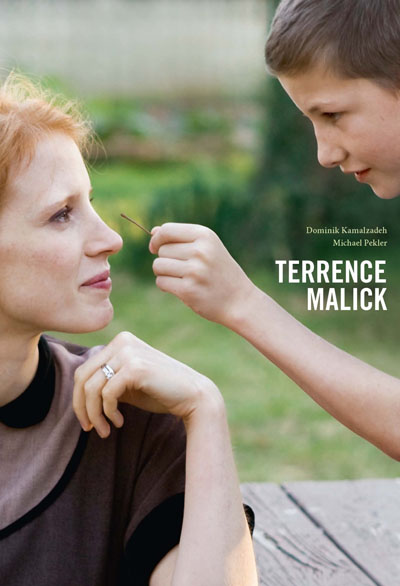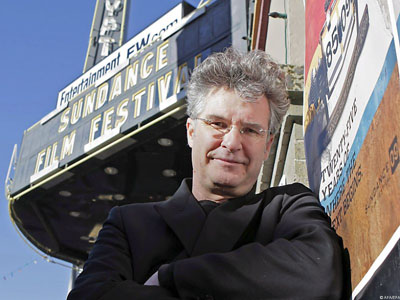With its second issue on paper out now, the multi-lingual journal La Furia Umana has begun to be a little more selective about which pieces it’ll be posting online. Even so, you’ll find quite a bit from the new issue, (S)elective Affinities, including essays on George Cukor by Dan Sallitt and Marilyn Ann Moss; Brad Stevens and Daisuke Akasaka on Abel Ferrara; Michael Guarneri‘s interview with documentary filmmaker James N. Kienitz Wilkins (Public Hearing, 2012; the US premiere is on Thursday at MoMA PS1); Raquel Schefer on Robert Kramer; and Louis-Georges Schwartz on Christina McPhee’s video installation Shed Cubed.
More reading. On Wednesday, Google celebrated Saul Bass’s birthday with a Doodle that re-sparked interest in the director and graphic designer. “For the title sequence to Vertigo, Hitchcock had an additional, often unnoted, collaborator,” writes Tom McCormack for Rhizome: “John Whitney. A pioneer of computer animation who worked in television in the 50s and 60s and in the 70s created some of the first digital art, Whitney was hired to complete the seemingly impossible task of turning Bass’s complicated designs for Vertigo into moving pictures,” and he “made use of an enormous, obsolete military computer called the M5 gun director.” Wild stuff, with pix.
A retrospective of films by Terrence Malick opens at the Arsenal in Berlin today, where Dominik Kamalzadeh will present the new book on the filmmaker he’s written with Michael Pekler. As it happens, the Los Angeles Review of Books has just published two pieces on Malick. First up, Michael Nordine‘s investigation into what all Malick was up to before he suddenly turned prolific. Quite a lot, actually: “He was either involved in or offered the chance to work on no fewer than a dozen different projects, several of which made it rather far along in the development process before ultimately being shelved by financiers who grew weary of their director’s slow pace. Malick never truly stopped being a filmmaker; he simply—and temporarily—stopped being one whose unconventional working methods meshed with the more business-minded elements of Hollywood.”
The second piece is Jon Baskin‘s on To the Wonder: “[T]he way of grace is never farther than we can leap. It is not a new point—Kierkegaard made it, over and over—but neither is it a common one today, and we are made here to feel its force.”
Gabriel Winslow-Yost for the New York Review of Books on Shane Carruth’s Upstream Color: “The hypothesis (one that has emerged in other forms in recent years) is that our emotional lives are in any case far less ‘ours’ than we think. Feelings, impulses, reactions—they simply arrive, from who knows where, for who knows what reason. We are left to deal with them as best we can, to piece together some workable self from whatever’s close to hand.”
In other news. “Gus Van Sant is to run a two-week workshop with students of the Film.Factory, a PhD level program at Sarajevo University’s Film Academy, established by Hungarian director Béla Tarr,” reports Michael Rosser for Screen Daily. “New programs will also be developed for the academy’s BA and MA levels to create an international film school offering all three levels of academic study…. Set to arrive next week are Carlos Reygadas, Jonathan Rosenbaum, and Manuel Grosso, while the semester’s closing lectures will be delivered by Tilda Swinton.”
New York. “Hypnotherapy, a group show at Kent Fine Art, gives David Lynch fans a chance to revisit the iconic filmmaker’s alarming artwork a year after his solo turn at Jack Tilton,” writes Thomas Micchelli at Hyperallergic. “But that’s only one, conspicuous though it is, of its strengths. What really matters is the opportunity to experience a museum-quality exhibition that approaches the pitfalls of latter-day surrealism with as much intelligence and refinement as this one does.” Through June 29.
In the works. Screen Daily‘s Andreas Wiseman has a pretty major update on Film4’s development slate. Andrea Arnold’s done the research and is now writing Mag Crew, about teenage Americans on magazine sales crews. “Paddy Considine has adapted and will direct The Years of the Locust, writer Jon Hotten’s account of match-fixing and murder in the 1980s Florida boxing world…. Shane Meadows’s Tommy Simpson, a biopic of Nottinghamshire cyclist Tommy Simpson who died of exhaustion during the 1967 Tour de France, is at script stage.” Ben Wheatley is shooting 20,000 Days on Earth, a doc about Nick Cave. Kevin Macdonald’s working on Black Sea, “with Jude Law in talks to star as a submarine captain in search of a sunken vessel reputed to be loaded with gold.” Peter Strickland will return to Hungary, “where he shot the well-received Katalin Varga,” for The Duke of Burgundy. “Film4 is also backing Mike Leigh’s Turner (now shooting); Lone Scherfig’s Posh; Gerard Johnson’s Hyena; Ben Wheatley’s Freakshift (partnering with Lava Bear in the US); and Yann Demange’s 71, which is shooting now.” And Michael Fassbender will star in a new Macbeth with Natalie Portman and will likely join John Maclean’s Slow West.
“Robert Downey Jr. is reuniting with his Iron Man director Jon Favreau for Chef.” According to Borys Kit in the Hollywood Reporter, Favreau wrote and will direct and star in the indie comedy that “follows a man who loses his chef job and starts up a food truck to reclaim his artistic promise, while simultaneously reclaiming his estranged family.”
Warner Bros. is about to pick up Ryan Gosling’s directorial debut, How to Catch a Monster, with Saoirse Ronan, Christina Hendricks, Eva Mendes, Matt Smith, Ben Mendelsohn, and Rob Zabrecky, reports Jeff Sneider at TheWrap.
Obits. “Peter Sehr, a scientist turned award-winning German film director who had an eye for young talent and a feel for political period drama, has died of a brain tumor. He was 61.” Scott Roxborough in the Hollywood Reporter: “Sehr’s breakthrough was Kaspar Hauser (1994), the true story from 19th century Bavaria of a boy who claimed to have been raised in total isolation in a dark cell and who might have been an heir to the royal family. He followed it up with two international productions: the romantic drama Obsession (1997), starring a pre-James Bond Daniel Craig, and the crime story Love the Hard Way (2001), featuring a pre-Oscar Adrien Brody.”
Isao Natsuyagi, who appeared in dozens of film and television productions over a career spanning 50 years, has died at 73, reports Kevin Ouellette at Nippon Cinema. Natsuyagi won best actor at the Mainichi Film Awards last year for his performance in Sion Sono‘s Land of Hope. He also appears in Hirokazu Kore-eda’s Like Father, Like Son, set to premiere in Cannes on Saturday.
More browsing? Mike Everleth‘s posted this week’s “Underground Film Links,” and John Wyver‘s got a fresh batch as well.
For news and tips throughout the day every day, follow @KeyframeDaily on Twitter and/or the RSS feed. Get Keyframe Daily in your inbox by signing in at fandor.com/daily.







